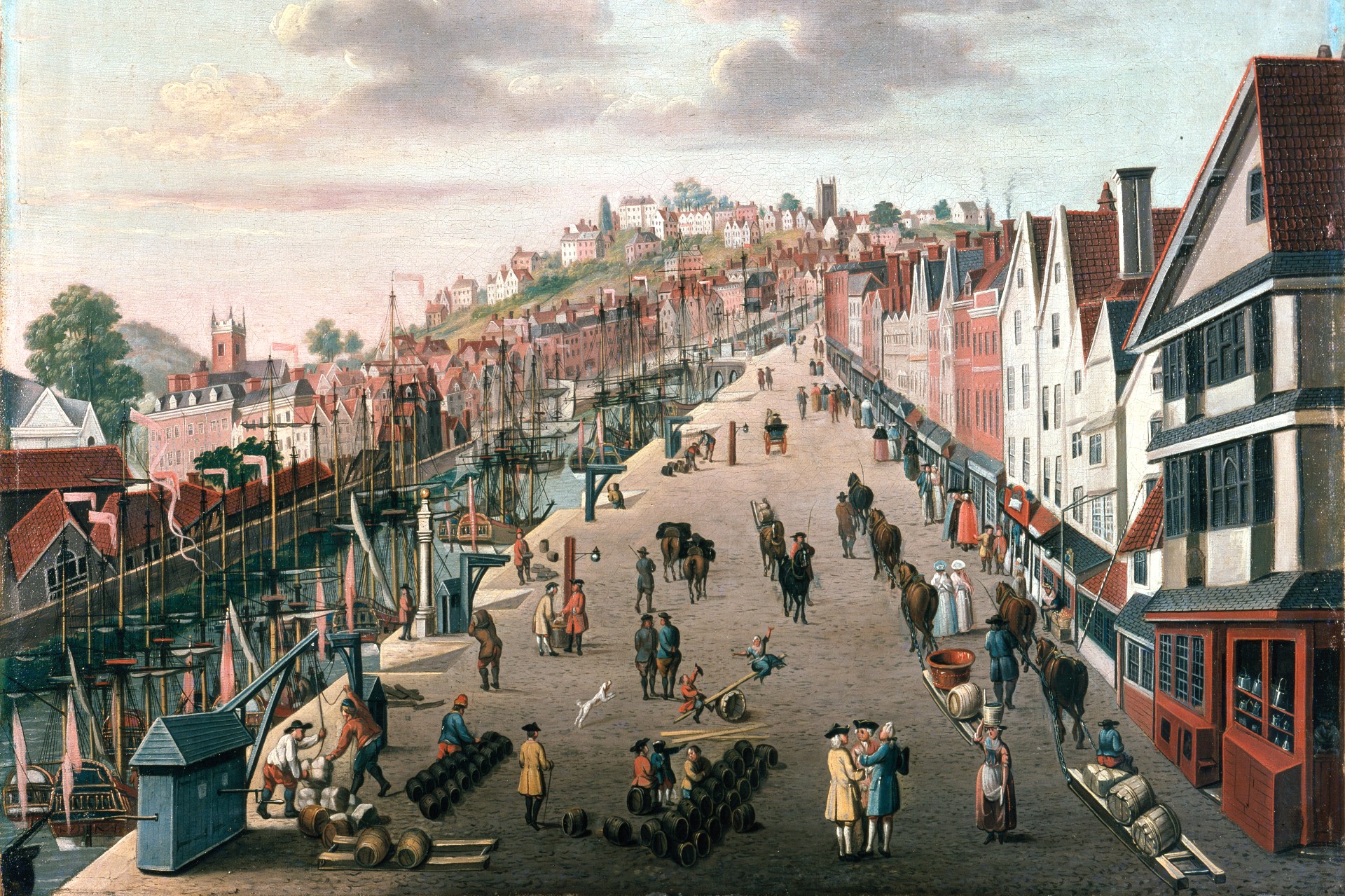
Broad Quay, Bristol [c.1760] Bristol Museums: Bristol Museum & Art Gallery
An historian from the University of Bristol has uncovered new evidence which suggests that Bristol's involvement in the Transatlantic Trafficking of Enslaved Africans may have started more than 30 years earlier than previously recorded.
The findings also point to Thomas Colston, a relative of Edward Colston, Bristol's most well-known trafficker of enslaved Africans, being involved in the Slave Trade several decades earlier.
Dr Richard Stone from the University's Department of History and Centre for Black Humanities, specialises in the history and legacy of the Atlantic slave economy with much of his work focusing on the city of Bristol's involvement in the Slave Trade.
Whilst transcribing a Bristol customs account from 1662 which had initially been misfiled at the National Archives he noticed two ships – the Endeavour and the Mary Fortune whose destination was labelled as Sao Tome an island nationality off the west coast of Africa. Thomas Colston was a principal investor of the Endeavor.
Dr Stone said: "This immediately caught my attention, as I don't normally see ships heading for a destination like that off the coast of Africa, and they also had some odd commodities on board like glass beads. So, I added a note saying, 'slave trader?', and went on with the transcription.
"Later that year, I was due to teach a class on Bristol's slave trade, and I remembered about these two ships. I thought it would be interesting to show my students 'a still in progress' research finding, so I did a little bit more investigation of the voyages."
Going to a customs record for the following year, Dr Stone traced the ships' return to Bristol. Both came back with cargoes of sugar and other goods that could only have come from the Caribbean which suggested he had found records of a triangular trading voyage 35 years before the date usually given for Bristol's entry into the Slave Trade.
Dr Stone added: "The presence of glass beads and Indian cloth amongst their cargoes, which are only ever seen on slave trafficking voyages, combined with the involvement of Thomas Colston left me convinced that I had found Bristol's first recorded entry into the transatlantic traffic in enslaved Africans.
"The significance of this could easily be lost among the numbers. After all, we're talking about a couple of voyages amongst hundreds which left Bristol every year at that point. But history is about human experience, not statistics and economic significance, and this is a window onto the story of thousands of lives lost."
Further investigation by Dr Stone has uncovered dozens more voyages like the Endeavour and Mary Fortune in the three decades before Bristol 'officially' entered the African trade, and there are almost certainly many more from the years when no records survive.
He said: "My best estimate is that Bristol sent out an average of two slave trafficking voyages a year over the 35 years between 1662 and 1698. Taking a conservative estimate of the number of enslaved people carried on each voyage, this would equate to more than 10,000 people taken from their lives in Africa to ones of enslavement in the Caribbean. That's the equivalent of half of the population of Bristol at that time.
"So, without doubt, we have to push the story of Bristol's involvement in this horrific business right back to the earliest days of English involvement and name the Colstons as amongst its pioneers."






